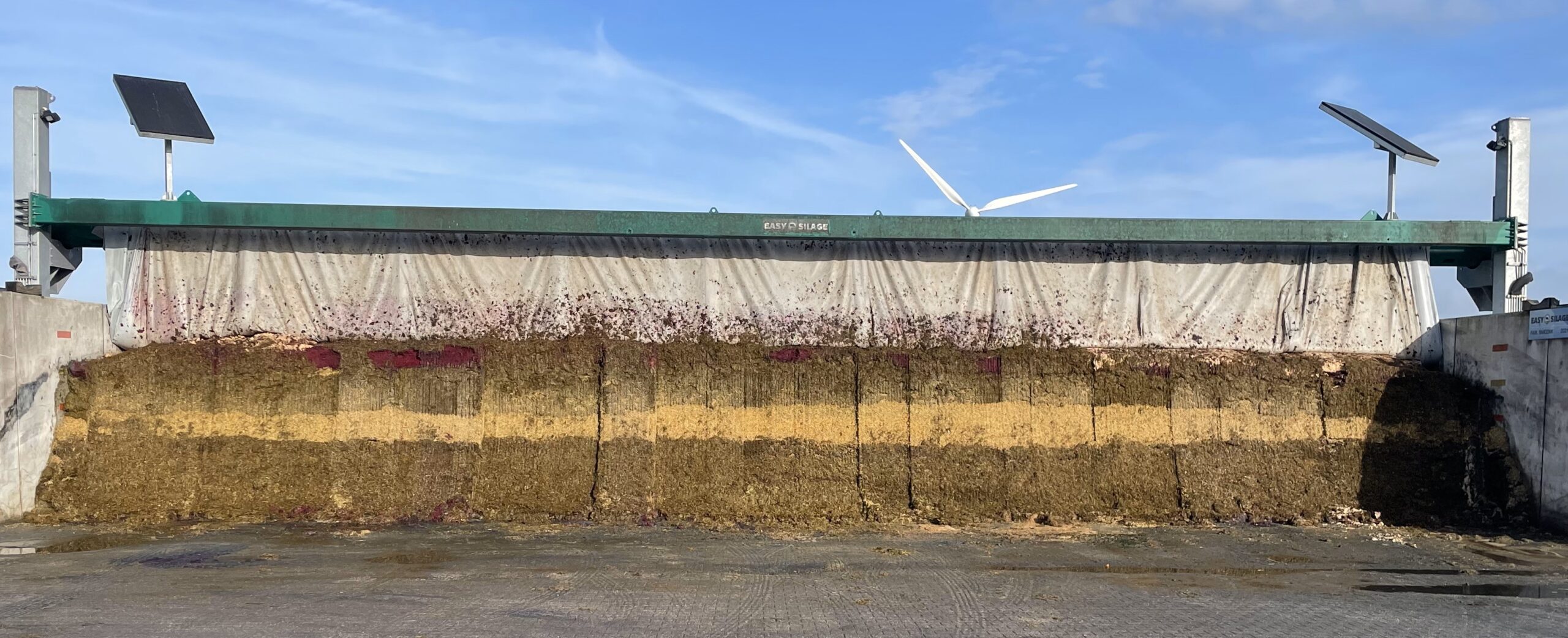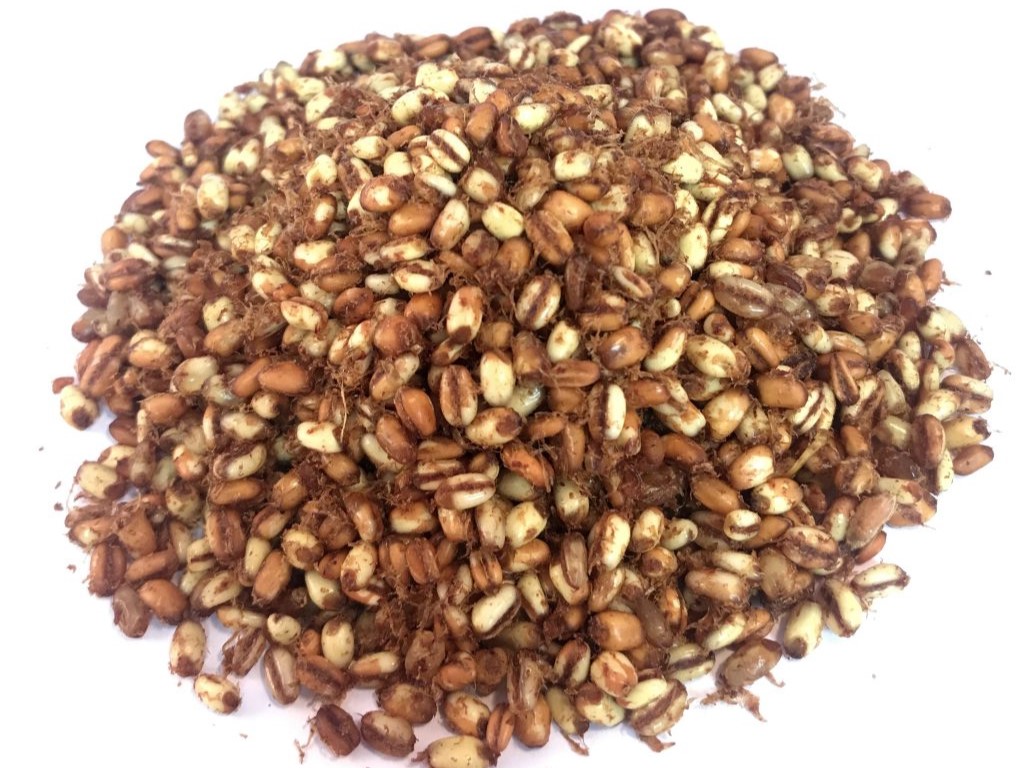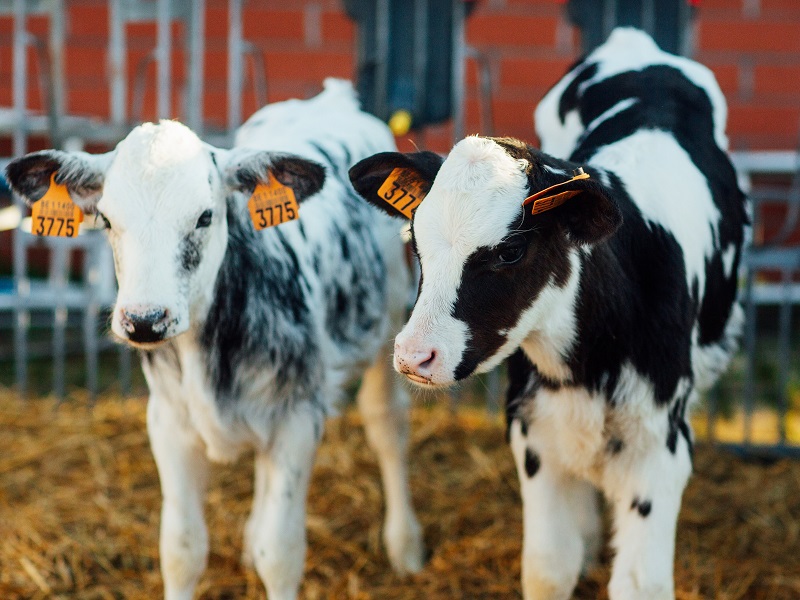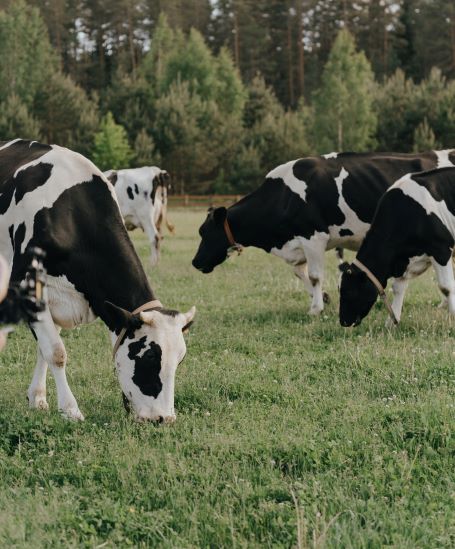When we launched Farmdesk in 2019, one of our ambitions was to offer a user-friendly ration module to dairy farmers. And we believe we have succeeded in that.
In that reasoning, we chose to show only the necessary key figures to keep the overview. The 10 key figures that we have always used to date are, on the one hand, the calculated parameters intake, VEM, FOS, DVE and OEB and, on the other hand, the "hard" key figures crude protein, crude fiber, starch, sugar and fat.
We recently received constructive feedback from several livestock producers, for which we thank them. What came back frequently was the request to also include the key figures bypass starch and NDF. We like to listen to our users, and have decided internally to include these in the rationing from now on.
Below is more explanation of how the new key figures were chosen, and how they will be used in Farmdesk.
NDF and ADL in practice
- A middle lamb - particularly contains pectins. Pectins are digestible in the rumen to propionic acid which after passage in the liver can give rise to glucogenic energy.
- A primary cell wall - specifically contains cellulose and hemicellulose. Cellulose and hemicellulose, in turn, are largely converted in the rumen to acetic acid which is used as a building block for milk fat .
- Eventually a secondary cell wall - contains particularly lignin (wood dust) and possibly cutin (cork dust). Lignin and cork dust are digestible in the rumen.
NDF and ADL in Farmdesk
In the typical Farmdesk ration graph, we have replaced Crude Fiber with NDF. Given the correlation between the two, this in itself brings nothing new. The Crude Fiber value and norm, by the way, remain consultable via the Details button.
What is new is that we also show the ADL/NDF fraction . This value indicates what percentage of the total NDF consists of non-digestible ADL. As described above, this value provides additional supplement about the digestibility of cell walls.
The standards below have been implemented for Holstein cows:
- NDF standard
- 333 g/kg DM at start of lactation
- 343 g/kg DM in the second half of lactation
- ADL/NDF standard
- 3% (where we use a fork of 1%-5%)
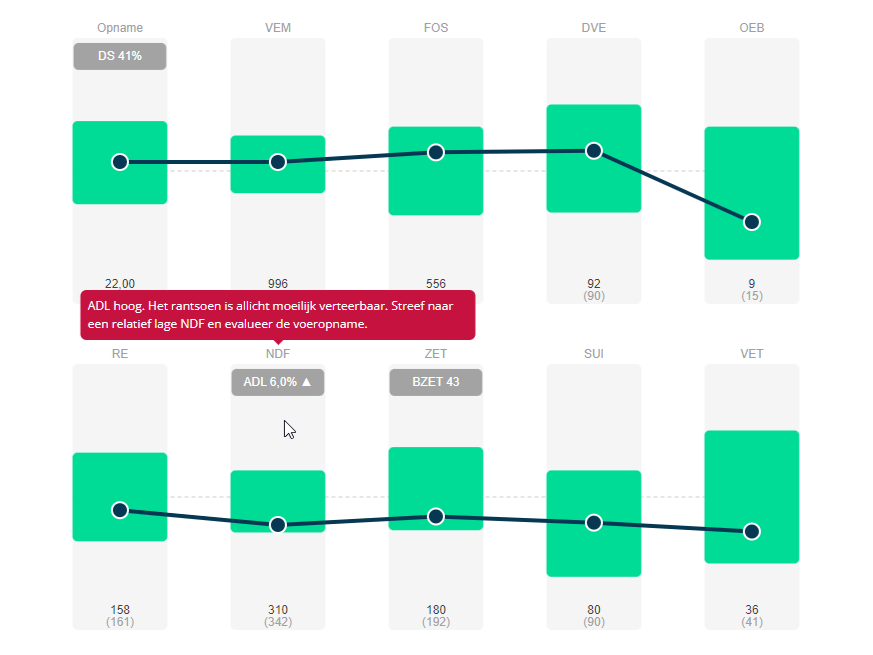
Bypass starch in practice
Starch is a cellcontent carbohydrate (unlike cell walls in NDF).
The unresistant starch fraction (which digests in the rumen) can serve as an energy source for the pens microbes (FOS) and/or can be converted in the rumen to propionic acid which, after passing through the liver, can give rise to glucogenic energy for the cow. Excessive unstable starch can give rise to strong lactic acid formation resulting in pens acidification .
The bypass starch fraction does not digest in the rumen, but goesonly in the small intestine to be able to be digested by pancreatic enzymes. Thus, it directly gives rise to glucose uptake from the intestine and glucogenic energy for the cow. If the starch is so resistant or excessively present in the small intestine, this can make the digestion here insufficient and this fraction gives rise to starch residues in the thick intestine. We then get unwanted bacterial growth here resulting in possible toxin production which can give rise to health problems such as colon inflammation, increased cell count and even increased risk of mastitis.
However, it is not all doom and gloom regarding resistant starch. A high-yielding starting cow benefits from getting enough resistant starch to stay out of negative energy balance. Problems with negative energy balance because of too tight a supply of resistant starch, can be solved by feeding corn or potatoes to new-calf cows. Potatoes have 627 grams of starch per kg DS, of which 276 grams are resistant. Corn meal has 640 grams of starch per kg, of which 210 grams is resistant.
Later in lactation the starch in the gut may get too much as the ample glucose in the blood may give rise to increased insulin levels in the cattle, which in turn may give rise to fatty and underproduction. Sometimes a recently ensiled mature cut corn gives rise to excess intestinal digestible starch. We then often see maize kernels in the manure. Soaking with water before feeding can bring relief, but often this also improves on its own if the corn remains ensiled longer, with the soaking process taking place in the silage itself over time.
Bypass Starch in Farmdesk
- Resistant starch
- 50 g/kg DM at start of lactation
- 30 g/kg DM middle lactation
- 10 g/kg DM end lactation
- Starch
- ~250 g/kg DM at start lactation .
- After 100 days of lactation gradual decrease to ~100 g/kg DM at 360 days into lactation
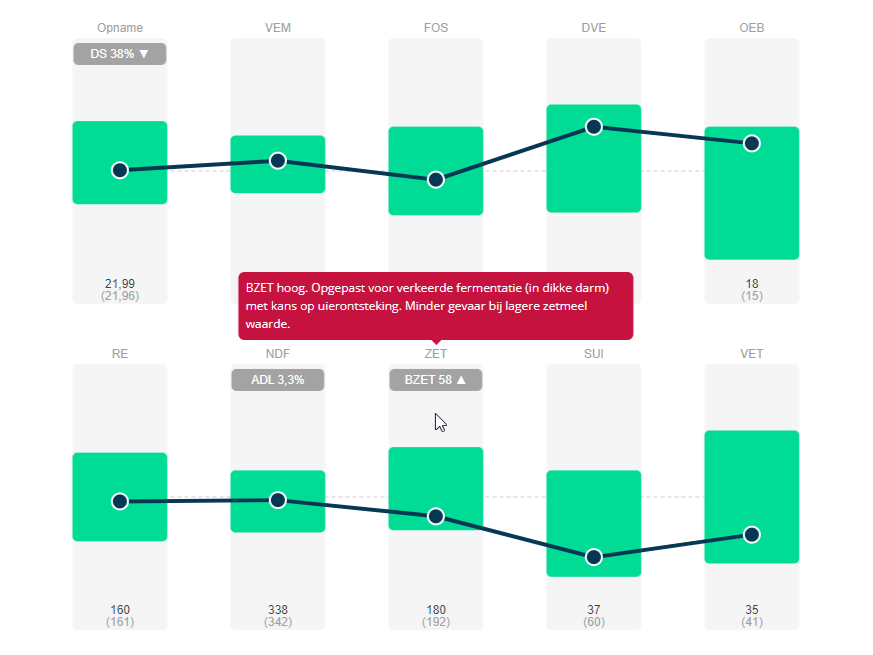
In the graph above, an example ration score with an excessively high BZET fraction where the ZET value is tight. If the total starch standard was not met, excess resistant starch is of less importance. In fact, ample resistant starch is a blessing in starch tightness.
On the other hand, however, it is important to be sure to guard against excessive levels of total starch when there is an excess of bypass starch. With ample levels of bypass starch, a longer storage time can be a boon. The addition of water to the ration can also accelerate digestibility, with the greatest effect being obtained if soaking is done half or full day in advance.


